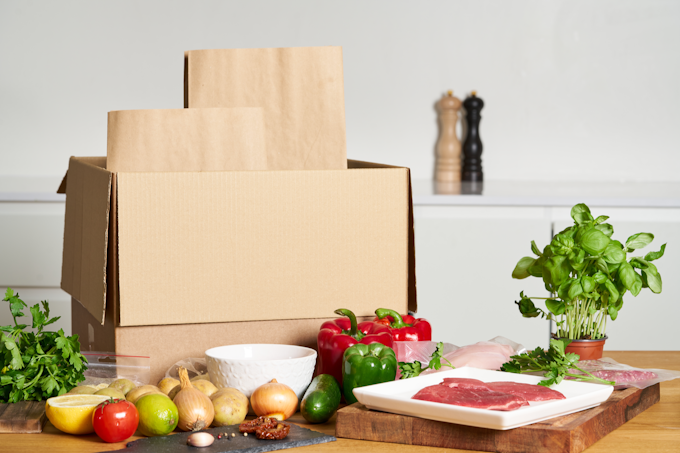How the covid-19 pandemic has affected food and drink packaging
The Covid-19 pandemic has fundamentally changed the way we live and work over the past year and packaging for the food and drink industry has not been spared.
Before the pandemic consumers preferred brands with reusable food packaging as it helped them to decrease their carbon footprint. This trend was overturned due to Covid-19 as the pandemic drove demand for single-use packaging that was easy to dispose, this was because consumers had become afraid that the packaging may be infected with the disease and could infect them.
In this article, we will be exploring the full effects the covid-19 pandemic has had on food and drink packaging, and where it will likely take us moving forward.

The Food Packaging Shortages
The food and drink industries were greatly impacted by the pandemic which led to packaging shortages. There were aluminium shortages from the closing of recycling operations and flavouring shortages affected some drink companies. Some wine deliveries have not been able to deliver wine on time because of the unexpected shortage of cardboard. This is on top of the recent shortages caused by a range of factors including Covid-19 and Brexit, which has seen mass shortages in corrugated cardboard as mentioned, wood and steel for pallets, and oil derived products for adhesive tapes.
The shortages of corrugated cardboard, dubbed ‘the hunt for beige gold’, even led to some retailers having to switch back to plastic solutions. For instance, home baking became so popular during the pandemic that corrugated egg boxes were switched to plastic to simply keep up with demand.
Covid-19 has not only affected food packaging, but also workers available and this continues to be the case. 78% of food and drink firms have said they did not expect to have limited workers in 2021, while more than one third have experienced chronic shortages. They do not expect to meet client demands for the 2021 summer peak.
It has been said that shortages to the labour supply have already begun to impact the UK Poultry Industry, with the British Poultry Council (BPC) reporting a 10% decrease in throughput because of a shortage of workers across farming and processing.
Sustainable food packaging took a hit
One of the key trends in recent years was sustainability and limiting the amount of single-use plastic packaging we use. However, once the pandemic hit, sustainability in packaging ended up taking a back seat. For example, last year The Department for Environment Food & Rural Affairs (Defra) pushed back the ban on plastic straws, stirrers, and cotton buds until October.
The food and drinks sector had to reconsider its approach to using reusable or refillable packaging that could carry transmission risks. One in three consumers believed that Covid-19 could be spread by boxes and packaging received from other countries.
This led to businesses having to use expanded polystyrene (EPS) foam because it was all that was available and caused the less impact on budget. As previously mentioned, with home baking becoming increasingly popular, it meant some retailers had to switch corrugated egg boxes to plastic ones in order to keep up with the demand.
When it comes to sustainable packaging, at Swiftpak, we recently launched our new sustainable Vegan Thermal Liner, an insulating, climate-neutral and eco-friendly packaging solution for food products. With over 48 hours of internal temperatures, high shock absorption, and a positive CO2 balance, the Vegan Thermal Liner is ideal for shipping food that requires a temperature-controlled environment.

Are you looking for temperature-controlled food packaging solutions?
Swiftpak supplies a range of temperature controlled packaging solutions for the food & drinks industry in any temperature range.
Hygienic Food Packaging
With consumers continuing to prioritise hygiene, it is expected that hygienic packaging will be a lasting priority once the covid-19 pandemic eases. Therefore, manufacturers will need to find a balance between sustainability and hygiene when it comes to packaging.
It is predicted that brands will start to consider using more tamper-proof packaging to provide reassurance to customers that their items have been fully protected during delivery. Another trend we see are anti-microbial coatings. These coatings on easily identifiable touch-safe zones are being considered as a way to provide customers with additional safeguards as consumers cautiously navigate the post pandemic world.
But what other changes may we see in the coming year?
The future of food packaging post-lockdown
The future of food packaging post lockdown will likely be more sustainable than ever. Packaging made from recycled materials is now booming – especially with companies very aware that the Plastic Tax Bill is fast approaching in April next year.
Brands are starting to re-think their packaging designs to design out waste and create products that support the idea of a circular economy. If you are interested in a truly circular solution, contact us today.

Food & Drink Packaging From Swiftpak
At Swiftpak, we know that your food and drink items need to be kept in a safe and well preserved. We have a variety of temperature-controlled packaging solutions to ensure that your items are kept within the specific temperature range needed. This includes our brand-new vegan thermal liner, a highly insulating climate-neutral packaging solution with a positive CO2 balance.
To find out more about our packaging solutions for the food and drink industry, please contact our food packaging experts today who will be happy to help.